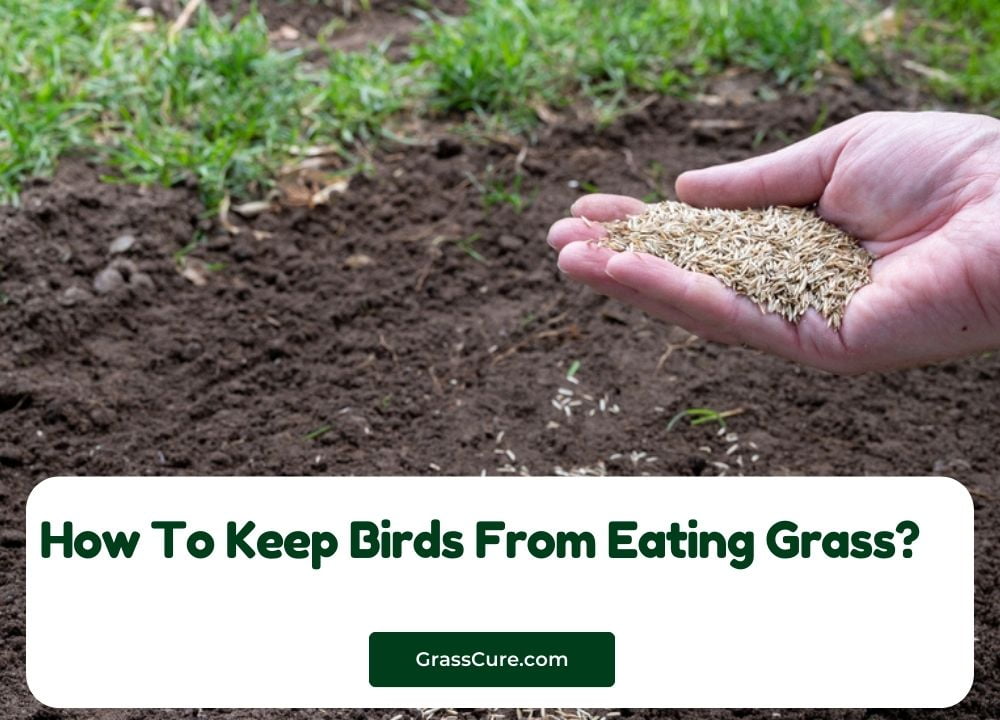Planting grass seeds is a vital step toward establishing a lush, green lawn. However, one of the biggest challenges gardeners face is birds feasting on the seeds before they have a chance to germinate. These feathered foragers can quickly undo your hard work, leaving bare patches and uneven growth in their wake. In this post, we’ll explore effective strategies to keep birds at bay and ensure your grass seeds thrive, so you can enjoy the beautiful lawn you’ve always wanted. Let’s dive into the solutions that will help you protect your investment and promote healthy growth!
Keep Birds From Eating Grass Seed
Understanding the Problem
Why Birds Eat Grass Seed
Birds are natural foragers, and seeds are a primary food source for many species. Grass seeds, rich in nutrients, attract a variety of birds looking to stock up on energy for migration or nesting. Species such as sparrows, finches, and pigeons are especially fond of grass seeds, making them frequent visitors to newly seeded areas. Understanding this instinctual behavior is crucial for gardeners aiming to protect their lawns.
The Impact of Birds on Lawn Care
When birds feed on grass seeds, the consequences can be significant. Not only does this lead to bare patches in your lawn, but it can also create uneven growth and a patchy appearance as the remaining seeds germinate at different rates. This uneven development can affect the overall health of your lawn and may require additional reseeding, leading to increased costs and more labor. By recognizing the impact birds can have on your lawn, you can take proactive steps to safeguard your grass seeds.
Strategies to Prevent Birds from Eating Grass Seed
Timing Your Seeding
To minimize the risk of birds eating your grass seeds, consider planting them at times when bird activity is lower. Early morning or late evening are often quieter periods, as many birds are busy foraging at dawn or settling in for the night. Additionally, planting during late spring or early fall, when fewer birds are nesting, can help reduce seed loss.
Using Seed Coating
Seed coatings can be an effective deterrent against birds. Some products are designed to make seeds taste unpalatable to birds, using ingredients like chili powder or other spicy substances. These coatings not only deter birds but can also protect seeds from pests and improve germination rates. Look for commercially available coated seeds or consider applying your own coatings to traditional seeds.
Physical Barriers
- 2.3.1 Netting or Fabric:
Covering newly seeded areas with bird netting or garden fabric is a straightforward way to protect seeds from hungry birds. Ensure the netting is secured to the ground to prevent birds from sneaking underneath, and remove it once the seeds have germinated and established roots. - 2.3.2 Fencing and Mesh:
Constructing small fences or using mesh barriers can create a physical barrier to deter birds. Make sure the barrier is tall enough and securely anchored to prevent birds from easily hopping over or digging under it.
Distracting Birds
- 2.4.1 Bird Feeders:
Set up bird feeders stocked with birdseed away from your grass-seeded areas. This distraction can help keep birds occupied, reducing their interest in your freshly planted seeds. - 2.4.2 Decoys:
Use decoys, such as scarecrows, reflective objects (like old CDs or aluminum foil), or even realistic owl statues, to create an illusion of danger. Moving these decoys regularly can enhance their effectiveness, as birds are more likely to stay away from areas that seem risky.
Utilizing Natural Repellents
Certain natural repellents can also help deter birds. For instance, scattering strong-smelling substances like cayenne pepper, garlic powder, or even coffee grounds around the seeded area can make the environment less inviting for birds. Additionally, planting aromatic herbs like mint or rosemary nearby can help mask the scent of the grass seeds.
Alternative Seed Options
Choosing Bird-Resistant Grass Seed Varieties
If you’re facing persistent issues with birds eating your grass seed, consider opting for bird-resistant grass seed varieties. These seeds are specifically bred to be less appealing to birds, often due to their size, taste, or texture. Here are some alternatives:
- Fine Fescue: This grass type features smaller seeds that are less noticeable to birds. It grows well in cooler climates and requires less maintenance.
- Perennial Ryegrass: While not completely bird-resistant, this grass germinates quickly, reducing the window of opportunity for birds to feed on the seeds.
- Bermudagrass: Known for its resilience and durability, Bermudagrass has a coarse texture that some birds find less palatable.
- Tall Fescue: With larger seeds that are hardier, tall fescue is often overlooked by birds, particularly when planted in combination with other grasses.
When selecting grass seeds, consult local gardening centers or online resources to find varieties best suited for your region that also minimize attraction to birds.
Blending Seed Mixes
Creating a custom seed mix that combines bird-resistant varieties with quick-germinating options can help establish a healthy lawn while mitigating bird activity. Mixing seeds can confuse birds and reduce their interest, as the diverse textures and sizes may deter them from foraging in your lawn.
Seed Mats or Pellets
Using seed mats or pellets can also provide a barrier against birds. These products encase the seeds in a protective layer that can help prevent birds from accessing them. Seed mats are especially useful for small areas or patches, allowing for easy installation and protection.
Monitoring and Maintenance
Regular Checks
After planting your grass seeds, it’s essential to monitor the area regularly. Check for any signs of bird activity, such as footprints, droppings, or disturbed soil. Keeping a close eye on the seeded area allows you to take immediate action if you notice birds attempting to feed on the seeds. This might involve reapplying deterrents, adjusting barriers, or implementing additional distractions.
Reseeding Strategies
If you find that birds have disturbed your grass seed, don’t be discouraged. Here are some tips for successful reseeding:
- Timing: Reseed as soon as you notice significant seed loss, ideally within a few days, to give new seeds the best chance of germination.
- Preparation: Lightly rake the affected area to create a fresh seedbed and improve seed-to-soil contact. This will help the new seeds establish more quickly and make it harder for birds to access them.
- Use of Protectants: After reseeding, consider reapplying protective measures such as netting or bird repellents. This additional layer of protection can help ensure that your new seeds have the opportunity to germinate and thrive.
Long-Term Lawn Care
Once your grass has established, maintain a healthy lawn through proper care. Regular mowing, watering, and fertilizing will not only promote growth but also improve the lawn’s resilience against environmental stressors, including bird activity. A thick, healthy lawn is less likely to attract birds looking for seeds, as they tend to favor sparse areas.
Conclusion
Protecting your grass seeds from birds is essential for establishing a healthy and vibrant lawn. By understanding the challenges posed by these natural foragers and implementing effective strategies—such as choosing bird-resistant seed varieties, using physical barriers, and monitoring the seeded areas—you can significantly reduce seed loss. Additionally, maintaining a robust lawn through regular care will not only enhance its appearance but also deter birds in the long run.
With the tips and techniques outlined in this post, you’re now equipped to safeguard your grass seeds and enjoy a flourishing lawn. Don’t hesitate to experiment with different methods to find what works best for you. Share your experiences and any additional tips in the comments below, and let’s work together to create beautiful, bird-friendly landscapes!






